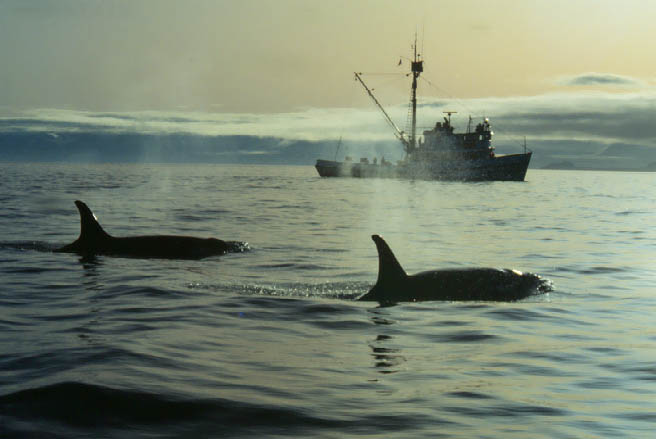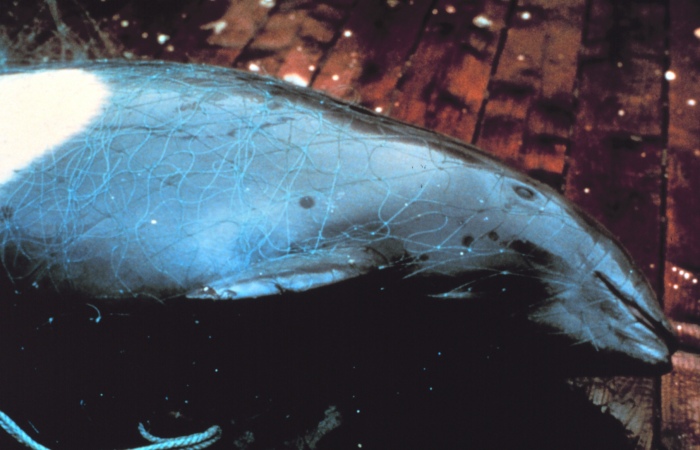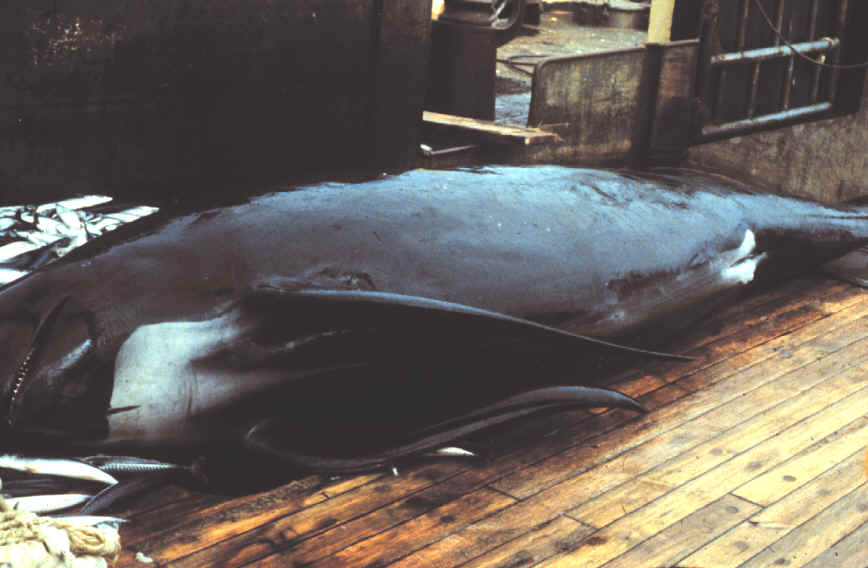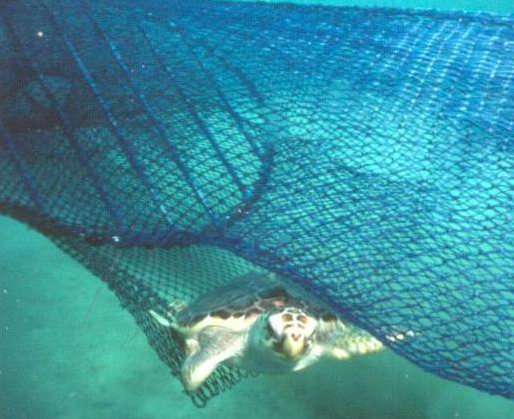Fisheries Interactions/Protected Species Bycatch
Related Links
|
Overview
Fishing gear can accidentally capture protected species, such as marine mammals, seabirds, sea turtles. The Office of Protected Resources works with the fishing industry to develop or modify fishing gear and practices to minimize this bycatch and its impact.
Marine Mammal-Commercial Fisheries Interactions
The 1994 Amendments to the Marine Mammal Protection Act (MMPA), made a number of changes in the regulations governing the incidental taking of marine mammals during the course of commercial fishing operations. The amendments included:
- A seven-year goal for reducing incidental serious injury and mortality of marine mammals to insignificant levels approaching a zero mortality and serious injury rate
- A simplified registration [pdf] process for certain fisheries
- New criteria for Category I, II, and III fisheries
- A requirement to report [pdf] when a marine mammal has been injured or killed
- A prohibition on intentionally killing marine mammals
- A mechanism for issuing permits to incidentally take endangered and threatened marine mammals
- An authority to place observers on vessels participating in any Category I or II fishery
- A mechanism to establish take reduction teams and develop take reduction plans for Category I and II fisheries
Marine Turtle Bycatch in the U.S.
Incidental take in fishing operations, or bycatch, is one of the most serious threats to the recovery and conservation of marine turtle populations. To reduce this threat, NMFS has instituted fishery observer programs to document the bycatch of protected species, such as sea turtles, and promulgated regulations to reduce sea turtle bycatch in the Pacific and Atlantic Oceans and the Gulf of Mexico.
In the Pacific, NMFS requires measures (e.g., gear modifications, changes to fishing practices, and time/area closures) to reduce sea turtle bycatch in the Hawaii- and California-based pelagic longline fisheries and the California/Oregon drift gillnet fishery.
In the Atlantic, NMFS has issued measures (e.g., gear modifications, changes to fishing practices, and time/area closures) to reduce sea turtle bycatch in pelagic longline, mid-Atlantic gillnet, Chesapeake Bay pound net, and Southeast shrimp and flounder trawl fisheries. In the southeast U.S. Atlantic and Gulf of Mexico, NMFS has worked closely with the trawl fishing industry to develop turtle excluder devices (TEDs) to reduce the mortality of sea turtles incidentally captured in shrimp trawl gear. TEDs that are large enough to exclude even the largest sea turtles are now required in shrimp trawl nets.
In 2003, NMFS launched the Strategy for Sea Turtle Conservation and Recovery in Relation to Atlantic and Gulf of Mexico Fisheries (Strategy) to evaluate and address sea turtle bycatch comprehensively across jurisdictional (i.e., state and Federal) and fishing sector (i.e., commercial and recreational) boundaries on a per-gear basis in fisheries of the Atlantic and Gulf of Mexico.
NMFS is currently involved in cooperative gear research projects designed to reduce sea turtle bycatch in the Gulf of Mexico and Atlantic pelagic longline fisheries, the Hawaii-based deep set longline fishery, the Atlantic sea scallop dredge fishery, the Chesapeake Bay pound net fishery, and non-shrimp trawl fisheries in the Atlantic and Gulf.
- Dietrich, K., V.R. Cornish, K.S. Rivera, T.A. Conant. 2007. Best Practices for the Collection of Longline Data to Facilitate Research and Analysis to Reduce Bycatch of Protected Species [pdf]: Report of a workshop held at the International Fisheries Observer Conference, Sydney, Australia, Nov. 8, 2004. U.S. Department of Commerce, NOAA Technical Memorandum NMFS-OPR-35; 88 p.
- Executive Summary [pdf]
- Long, K. J., and B. A. Schroeder (editors). 2004. Proceedings of the International Technical Expert Workshop on Marine Turtle Bycatch in Longline Fisheries [pdf] [14.0 MB] U.S. Department of Commerce, NOAA Technical Memorandum NMFS-OPR-26, 189 p.
- Executive Summary [pdf]
- Williams, Phil, Paul J. Anninos, Pamela T. Plotkin, and Karen L. Salvini (Compilers). 1996. Pelagic Longline Fishery - Sea Turtle Interactions [pdf] [602 KB] Proceedings of an Industry, Academic and Government Experts, and Stakeholders Workshop Held in Silver Spring, MD, 24-25 May 1994. U.S. Department of Commerce, NOAA Technical Memorandum NMFS-OPR-7, 77 p.
More Information



